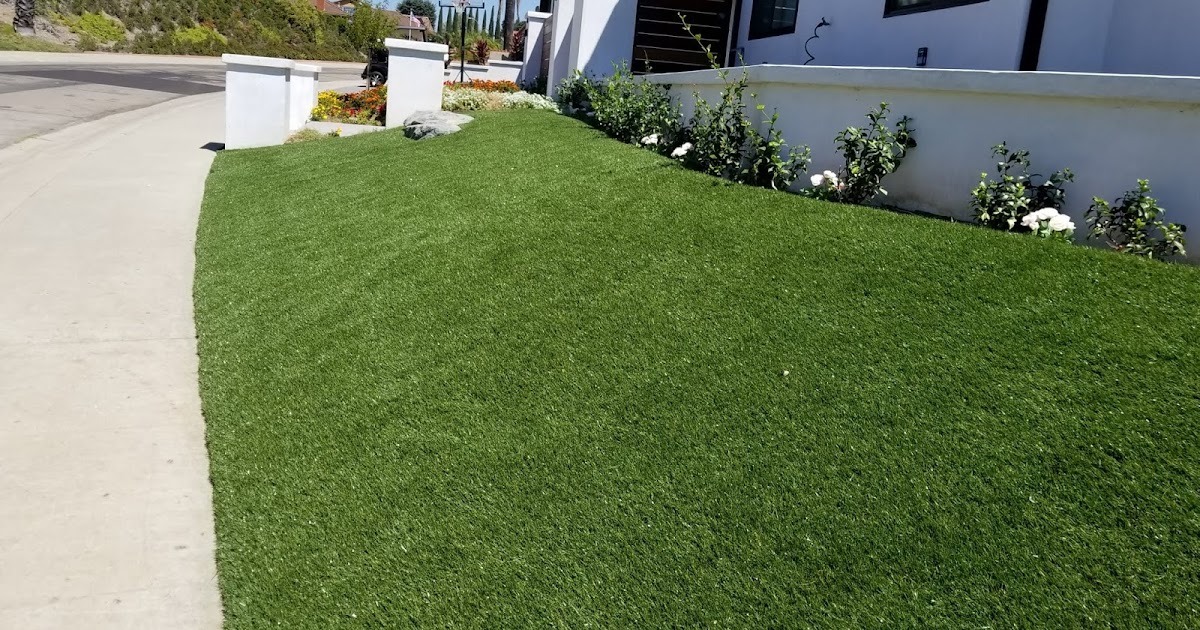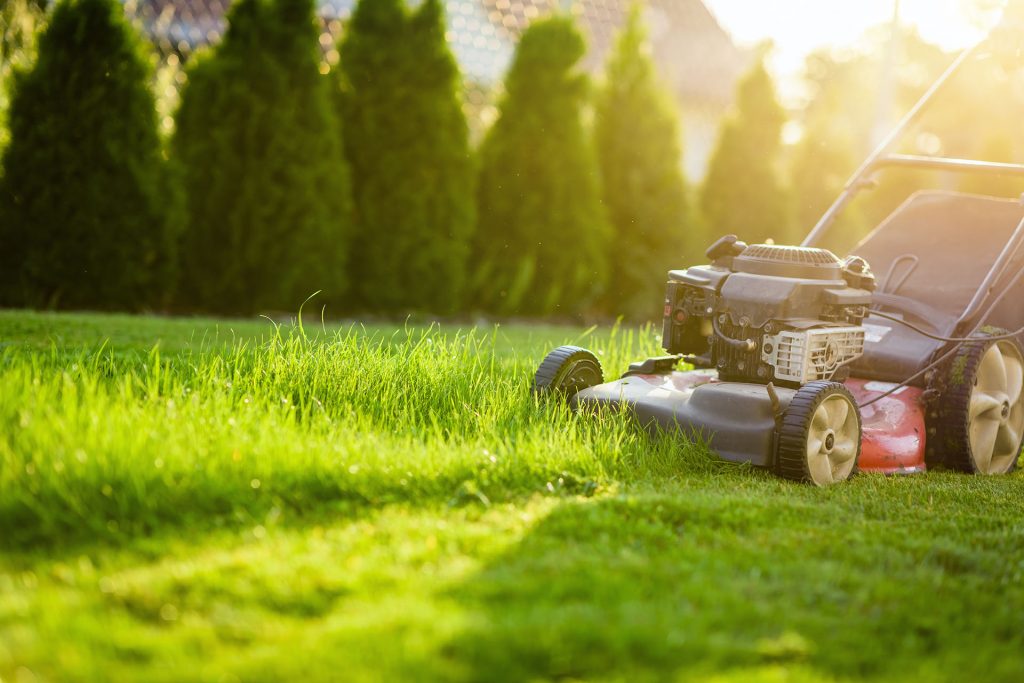How to Mow a Slope: Tips for Maintaining a Sloped Lawn
Quick Links
Maintaining A Sloped Lawn
Mowing on a slope can be particularly challenging, but the outcome is incredibly rewarding.
It requires extra caution and proper techniques to ensure a neat and well-maintained lawn without risking accidents or damage to your turf.
Steep slopes can be hazardous if not approached with care, but with the right knowledge and equipment, you can achieve excellent results.

In this guide, we will provide essential tips on how to safely and effectively mow a slope, preserving the beauty of your lawn while ensuring your safety.
How to Mow Grass on Steep Slopes – Step by Step
Step 1: Preparing for Slope Mowing
Assess the slope and conditions
Before you begin mowing a slope, carefully assess the terrain to identify potential risks and challenges.
Steep hills can vary in angle and stability, so make sure to evaluate the following:
Slope angle: Determine the incline of the slope. A slope with a moderate incline (less than 30 degrees) is easier to mow than a steeper slope.
Soil conditions: Check the soil for moisture content. Avoid mowing when the soil is wet, as it can cause you to lose traction and slip, or cause soil compaction on the slope.
Obstacles and hazards: Look for any rocks, roots, holes, or debris that might pose obstacles during mowing.

Choose the right mower
Selecting the appropriate mower for mowing slopes is crucial for both efficiency and avoiding serious injury.
A walk-behind mower with self-propelled or all-wheel-drive features are recommended, as they provide better control and traction on inclines.
Before you choose a mower, ensure that its slope angle rating is suitable for the steepest angle of your slope.
Alternatively, consider using a string trimmer or brush mower for an extremely steep slope, as they offer more manoeuvrability.
Wear proper safety gear
Always prioritise safety when mowing a slope. Wear non-slip shoes or boots with good traction, eye protection, and hearing protection if using a gas-powered mower.
Additionally, wearing long pants, gloves, and a hat can help protect you from debris and direct sun exposure.
Step 2: Use Mowing Techniques Suitable for Your Slope
Mow across the slope
When mowing a slope, it’s essential to mow across the slope rather than up and down. Mowing across the slope helps prevent the mower from tipping over and reduces the risk of accidents.
Start at the bottom of the slope and mow horizontally, moving from one side to the other.
Take smaller swaths
To maintain stability and control, take smaller swaths while you mow slopes. Avoid wide turns and sudden changes in direction, as they can lead to loss of traction and stability.
Instead, take your time and make gradual turns at the end of each pass.
Use a slow and steady pace
Maintain a slow and steady pace when mowing a slope. Avoid rushing or trying to cover too much ground too quickly, as this can compromise your control over the mower.
Focus on maintaining balance and stability throughout the mowing process.

The best way to use a slow steady pace is to utilise the lowest gear with RPMs up. Where possible, brake with the transmission, not the brakes or parking brakes, to avoid locking up (unless in an emergency).
Mow on dry days
Mow on dry days when the soil is firm and not overly slippery so that you can maintain control. Wet soil can make mowing slopes dangerous, increasing the risk of accidents and damaging the turf.
Dry grass will help you maintain maximum traction, and will especially make a difference when you have a high slope rating or very steep hill.
Additional Safety Tips
Mow in daylight
Mowing slopes in daylight provides better visibility and makes it easier to spot upcoming obstacles.
By avoiding mowing at dusk or in low light conditions when visibility is compromised you reduce the chances of overlooking obstacles or uneven terrain.
Don’t mow on a slope during rainy seasons
During rainy seasons, it’s best to avoid mowing extremely steep slopes altogether. Wet soil and slippery grass can make mowing hazardous, and there’s a higher risk of causing damage to the lawn.
Mow regularly
Frequent mowing helps keep the grass at a manageable height, preventing it from becoming too tall and difficult to mow on slopes. Regular mowing also reduces the strain on the mower and ensures a more even cut.
Practice downhill mowing
If you encounter a slope that is too steep to mow across, try mowing downhill instead of uphill. Mowing downhill provides better control and reduces the risk of the mower tipping over.
Shift the mowing deck up
Hills don’t need to be mowed at the same height as the rest of your grass. Take the time to adjust your deck.
Don’t start or stop on a slope
Where possible, avoid starting or stopping on a steep hill or slope as this will give you less traction and control over your mower, whether it’s a ride-on mower or a push mower.

Don’t shift to neutral
Similarly, you’ll lose control if you shift into neutral or coast down the slope.
Test your brakes before you start
You must check your brakes are properly adjusted to safely operate your mower on a slope.
Testing your brakes is a good habit to get into, and a habit you won’t regret if you ever mow downhill or across a slope and need them in an emergency situation.
Fix ruts and holes or remove obstacles before you mow
By filling in ruts and holes, or removing bumps where possible, your slope will be smoother and cutting grass will be far easier as well.
Don’t mow steep hills when wet
We can’t say this enough (so we’ve included it again). In addition to the risk of slippage, waterlogged or muddy turf will often give way or behave unpredictably when compacted by the substantial weight of a mower.
Mowing a slope requires careful preparation, the right equipment, and a focus on safety.
By assessing the slope, using the appropriate mower, and following the recommended mowing techniques, you can maintain a well-groomed lawn without compromising your safety.
Remember to wear proper safety gear, take smaller swaths, and mow at a slow and steady pace. Regular maintenance and attention to safety measures will help you achieve excellent results while ensuring your well-being.
With these tips in mind, you can confidently tackle the challenge of mowing a slope, keep your grass healthy and enjoy a beautiful lawn all year round. Happy mowing!
See more mowing tips:
read more!
recent posts
What is the Best Grass for a Lawn? A Complete Guide to Top Choices
Discover the best grass options for your lawn with our complete guide. Make informed choices for a lush, healthy yard. Read more to find your ideal grass!
Choosing the Right Weed Killer for Your Sir Grange Zoysia Lawn
Discover the best weed killer for Sir Grange Zoysia and essential tips for effective application. Enhance your lawn’s health and beauty!
Why Is My Zoysia Grass Dying? Common Causes and Solutions to Revive It
Is your Zoysia grass struggling? Discover common causes of decline and effective solutions to restore its health. Read the article for expert tips!

Our Turf
TifTuf Bermuda
Buy Turf Online © 2019 All Rights Reserved. | Proudly Designed and Developed by Sydney ICT



